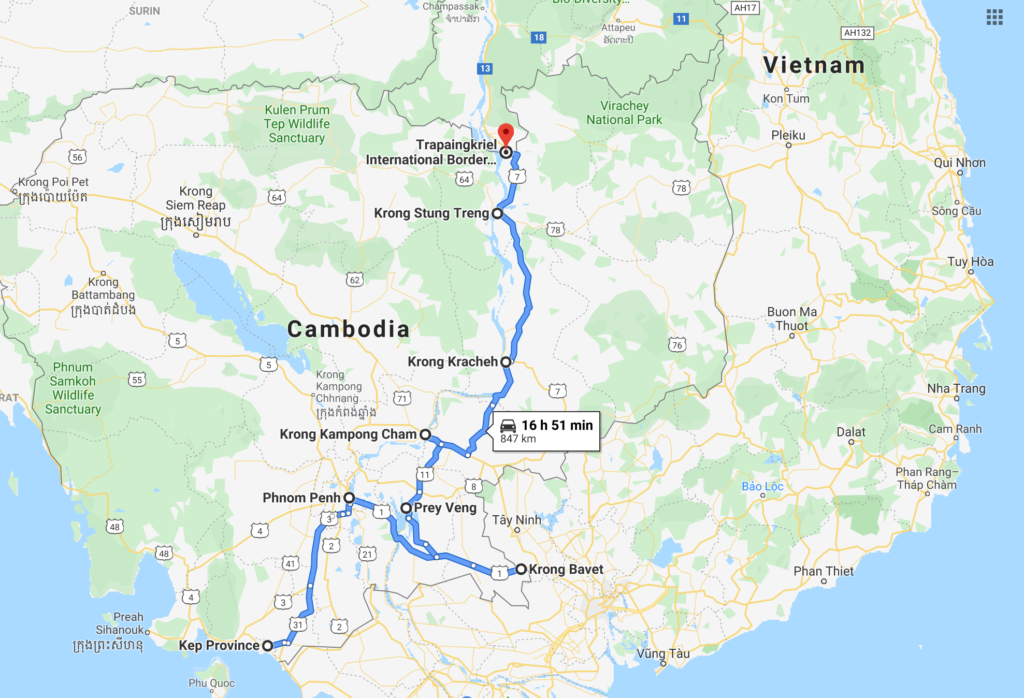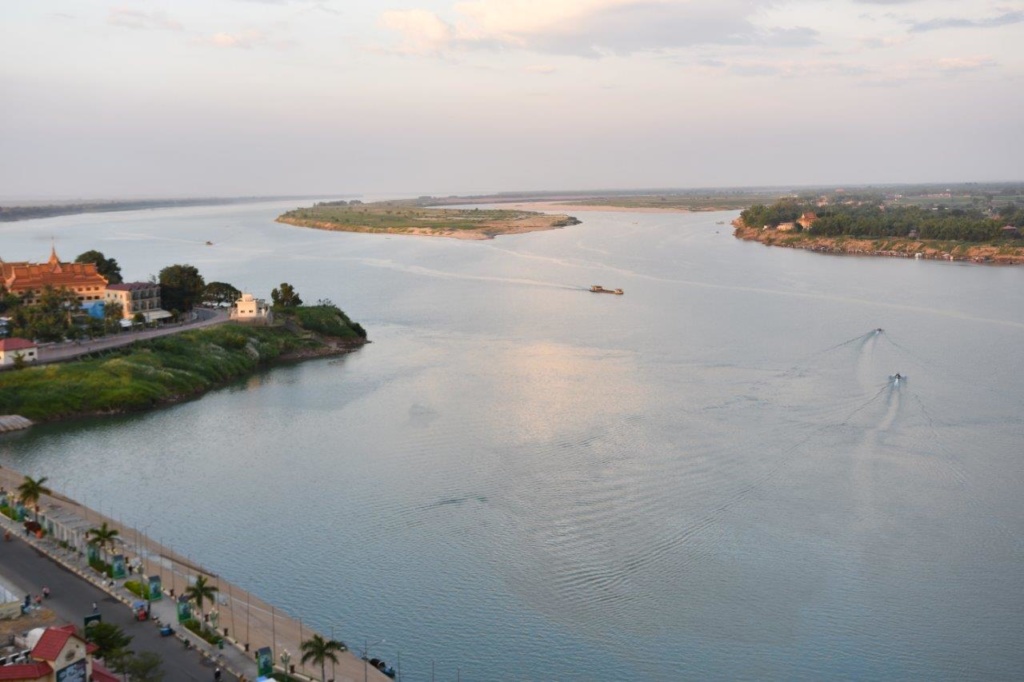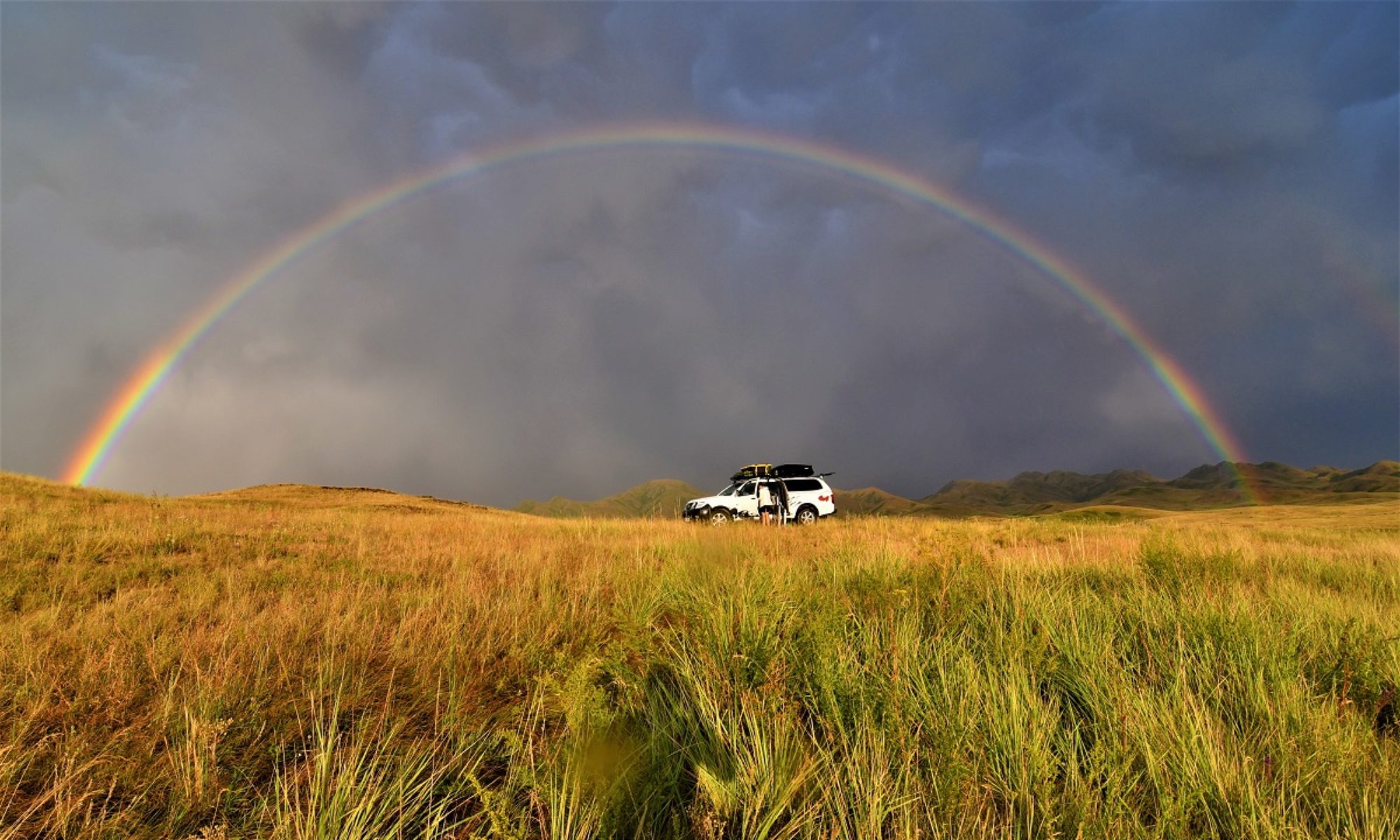
Saturday 14th and Sunday 15th December, 2019 – Phnom Penh
Busy place with a fair number of tourists meaning you can find cuisine targetting western taste as well as asian. Some nice colonial houses but also some grotty areas and usual markets.
Top of the list for most visitors is the Tuol Sleng Genocide Museum. This is a grim reminder of the slaughter of innocent people by the Kmer Rouge during their reign of terror from 1975 to 1979.
The site is a former secondary school which was used as Security Prison 21 by the Khmer Rouge regime, a secret facility for the detention, interrogation, torture and extermination of those deemed “political enemies” of the regime. Due to a policy of guilt-by-association, at times whole families were detained at the center. Only 12 former inmates survived the opening of S-21 when Phnom Penh was liberated. Four of them were children. Some of the classrooms we used for interrogation and torture and others were divided into small cells, barely big enough for a man to lie down. The museum chronicles the Cambodian genocide. The Kmer Rouge left detailed accounts of their barbarism taking black and white photos of their victims, before and after torture… This is not for the squeamish. During early 1977, when the party purges of Eastern Zone cadres were getting under way, S-21 claimed an average of 100 victims a day.
The sheer ordinariness of the place makes it even more horrific: the suburban setting, the plain school buildings and the grassy playing area where children kick around balls, juxtaposed with rusted beds, instruments of torture and wall after wall of disturbing portraits.
Between 1975 and 1978, some 20,000 people held at S-21 were taken to the killing fields of Choeung Ek, 8km outside Phnom Penh and brutally murdered. Today a Memorial Stupa, stands there, erected in 1988 and containing more than 8,000 skulls.
Monday 16th December, 2019 – Bavet
Drove to Bavet with the intention of crossing into Vietnam but we were stopped by Customs as we did not have a special permit from the Department of Transport to bring the car into the country. The officer would not budge, we tried to explain our case but to no avail. We contacted an agency but were told it would take at least 3 days, more likely 8 days and would cost USD 1,000 so we declined and we had no choice but to re-enter Cambodia (buying new visas, USD 60) and make our way to the Laos border in north Cambodia, by-passing Vietnam altogether.
Tuesday 17th December, 2019 – Kampong Cham
Kampong Cham is on the Mekong river and we decided to treat ourselves with a nice room with a view in one of the top hotels ( USD 30 so not exactly breaking the bank!). Western standards with hot water tap at the sink in the bathroom, bath and shower: a luxury. We also had a nice meal in a local retaurant where I tried Fish Amok ( river fish curry, very tasty), followed by Fried banana in cane syrup, yummy!

A bamboo bridge is rebuilt every year after the rainy season to link the town to a village on Ko Paen island in the middle of the river. It takes a month to build and is 1 km long, just wide enough for cars but not sure I would attempt to cross it by car !
Wednesday 18th , Thursday 19th December, 2019 – Kratie – Kampi – Stung Treng
The most popular place in Cambodia to glimpse Southeast Asia’s remaining fresh water Irrawaddy dolphins. Kratie is a riverside town on the Mekong with French era architecture legacy.
The best place to see the dolphins, if you are lucky, is actually 15km north of Kratie in a small place called Kampi. We were assailed by touts trying to sell tours to see the dolphins when we drove through Kampi and we did not stop as we already saw them during our trip to Laos 6 years ago.
We took small roads and saw rural Cambodia with houses very near the river, people eking a living from fishing and cultivating small plots of land. Somes houses were no more than derelict wooden shacks but were still lived in. Most have electricity (and satellite dish sometimes) but no running water as far as we could tell. Instead they collect water in big earthen pots and wash in the river.
At one point we took a road leading to the river where a small ferry was waiting, loading cars and passengers. We got on thinking it was going to the big sand bank in the middle of the Mekong, near Kratie but in fact it was going to the other bank of the river with no direct road going north so after driving around for a while we took the ferry back and resumed our journey. We saw mango trees with plenty of ripening fruit, coconut and turnip sellers by the side of the road. The rice harvest is mostly over, only straw stubs remain in the fields, but here and there there are some green paddy fields.
Got to Stung Treng early afternoon, last stop before crossing into Laos in the morning













































